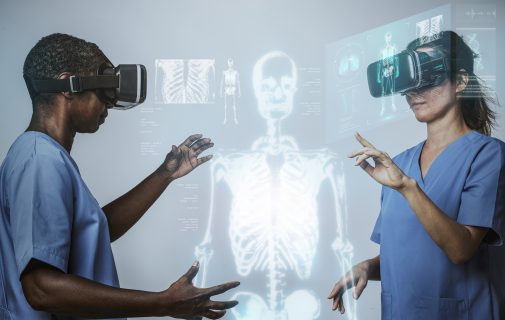 How Technology Is Making Healthcare More Accessible
How Technology Is Making Healthcare More Accessible
The pace of technological development is increasing before our very eyes. All of these changes have had a profound impact on the way we communicate, go about our business and view media over the past couple of decades. Having said this, there are so many other areas technology is affecting us in a much more personal way, specifically our healthcare and wellbeing. Technology has made these two things much more accessible by lowering the cost of care and making them easier to understand. At a time when many people do not have access to quality care, it makes even more sense to look into new ways technology can deliver better healthcare to more people.
For these reasons, today, we will take a look at some ways patients, doctors, and other professionals in the healthcare space can use things like the apps on their smartphones and video conferencing to increase the quality of care. While many of the technologies we will talk about are still in the development stages, they are sure to have a huge impact once implemented. So, without further ado, let’s get straight into it.
1. Turning Your Phone Into a Mobile Clinic
While smartphones are really useful for staying connected, they also offer sophisticated computing capabilities. This is why a lot of companies are taking advantage of this and creating apps and gadgets that allow you to turn your phone into a device that can dispense valuable medical information.
There are many examples of this, such as Tissue Analytics, which is a company that allows users to take a picture of their wound over time and send it to doctors for deeper analysis. AliveCor is another tool that allows users to measure their heart’s electrical activities the same way an ECG machine would. These apps and many more are helping lower the cost of care healthcare organizations will not need to spend money procuring expensive pieces of equipment since the patients can reproduce this functionality with their devices.
2. Telemedicine
Telemedicine allows patients to consult with their healthcare providers over the phone or through a video app like Skype or Zoom. There are many different benefits to such an approach. First of all, meeting virtually is a lot cheaper than meeting in person. Also, if a person is ill, they don’t have to leave their home and put other people in danger. And telehealth can make healthcare more accessible since there are many people who cannot leave their house because of health reasons, or they may live in rural areas where the needed healthcare is not available. Therefore, expanding the capabilities of telemedicine will help improve healthcare in more ways than one.
3. AI Doctors
In many ways, AI-powered medicine is already here. For example, there are companies that enable patients to receive medical advice from AI health apps. Such AI systems would be trained on patients’ data and would get increasingly more accurate as the patient labels their diagnosis accurate (or not). These types of apps can serve many other health functions by reminding patients to take their medication, track their physical activity, and many other things.
4. Helping Doctors and Patients Bridge Language Barriers
A lot of times, patients and doctors have different native languages, and their proficiency in one language is not advanced enough to either give or receive medical advice. Such language barriers prevent people from getting the care they need and accessing health services. Thanks to advancements in AI, there are smartphone apps that offer real-time translations in many different languages and can translate medical information without losing meaning or context. Not only is this increase access to care, but it is also empowering patients to take charge of their healthcare.
5. Wearable Technology
Wearable tech, such as bracelets and armbands, allow patients to monitor their movements and provide their doctors with important metrics on their physical activity. This information can be very important when speaking with your doctor about your overall wellness goals. This can also be used by insurance companies to offer their customers incentives to use wearables. In addition to fitness, such werable technology can be used to monitor vital statistics such as a user’s heart rate, lung function, blood oxygen level, and blood sugar.
Make Technology Part of Your Workflow
New digital platforms may have the ability to improve the workflow for health care providers, as well as enhance patient satisfaction by enabling more personalized, integrated, and data-driven clinical recommendations. Considering these emerging technologies – and discussing them with your patients and your health plans – may help encourage improved health outcomes, curb costs and help your practices grow.















 How Technology Is Making Healthcare More Accessible
How Technology Is Making Healthcare More Accessible










